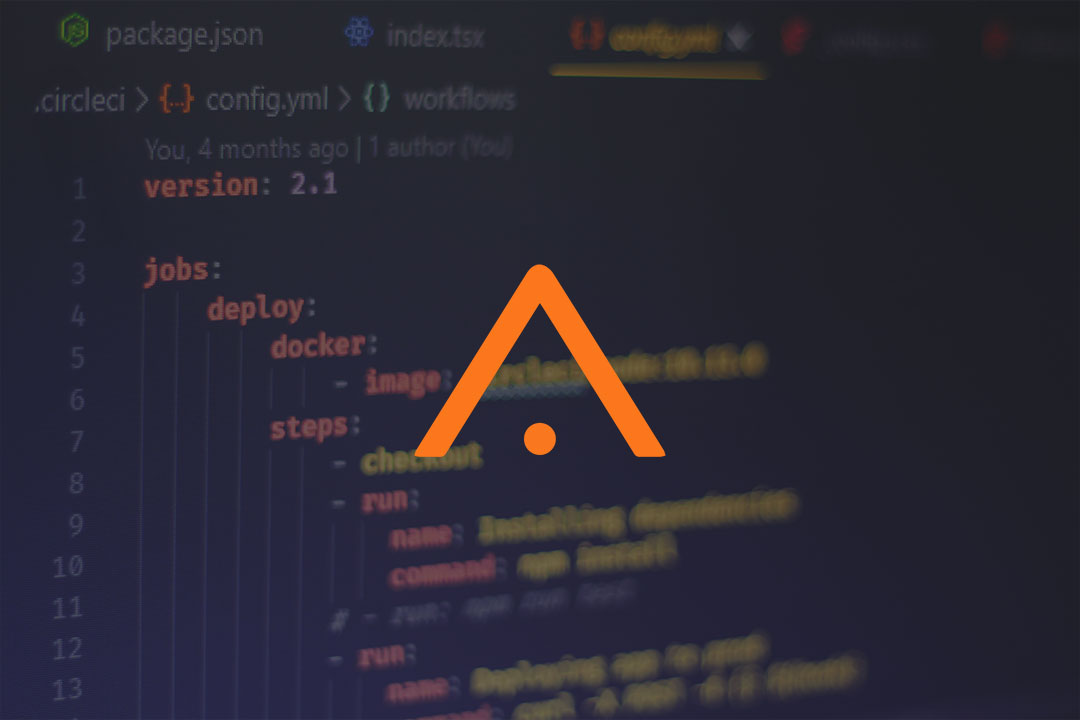CI/CD Pipelines with Autonomous Agents for API Integrations
 Rory Murphy
Rory Murphy
Continuous Integration and Continuous Deployment (CI/CD) pipelines are the backbone of modern software development, automating testing and deployment to ensure code is always ready for release.
In API integrations, these pipelines are especially valuable, allowing updates to deploy quickly and consistently while reducing the risk of introducing errors.
However, traditional CI/CD pipelines often demand significant manual oversight—teams must monitor, troubleshoot, and manage errors, all of which add complexity and potential delays to the process.
Imagine a system where these tasks are automated, managed by intelligent, autonomous agents that handle real-time monitoring, automated testing, error resolution, and adaptive deployment.
This article dives into the potential for autonomous agents to take CI/CD automation to the next level for API integrations.
From scaling resources to managing deployments and even anticipating issues before they arise, autonomous agents could transform CI/CD pipelines into seamless, self-managing systems that improve efficiency, cut down on errors, and free developers to focus on innovation.
Explore how these agents might revolutionise the way we build, deploy, and manage APIs.
If you’re looking for an API integration platform that currently applies autonomous agents, look no further than APIDNA.
Click here to try out our platform today.
The Role of Autonomous Agents in CI/CD Automation
Autonomous agents are poised to bring a new level of intelligence to CI/CD pipelines, particularly in automating tasks that streamline API integration processes.
These agents can monitor, detect, and act in real time to handle code integration, continuous testing, and even self-healing functions—all crucial for smooth and reliable API integrations.
First, automating API code integration is a powerful capability of autonomous agents.
Agents can automatically merge code updates, integrate them with existing systems, and resolve conflicts in real time without manual intervention.
This proactive handling of code changes not only speeds up the release cycle but also helps maintain consistency and stability, reducing errors that often occur with human oversight.
Continuous testing is another area where autonomous agents excel.
They can execute testing protocols at every integration stage, conducting everything from unit tests to performance and security checks.
By automating these tests, agents ensure that changes do not introduce breaking issues or degrade API performance.

Additionally, autonomous agents can analyse test outcomes, learning from each cycle to improve accuracy and effectiveness over time, which helps streamline quality control in the pipeline.
Lastly, self-healing pipelines represent a game-changing feature.
Autonomous agents can monitor the pipeline’s health, detect issues or potential failures, and implement fixes instantly.
This ability to self-correct and recover from errors minimises disruptions and significantly reduces downtime.
When errors do arise, these agents apply automated solutions, maintaining pipeline continuity and reducing the need for manual troubleshooting.
Dynamic Resource Allocation in CI/CD Pipelines
Autonomous agents bring valuable adaptability to CI/CD pipelines by enabling dynamic resource allocation.
This is a key feature for optimising resource usage and ensuring stable, efficient API integration processes.
Through adaptive resource management, these agents can monitor workload intensity in real time, allocating additional computational resources during peak loads and scaling down during low-traffic periods.
Pipeline scaling is also greatly enhanced by autonomous agents, especially as API integrations grow in complexity.
Traditional scaling methods often require manual adjustment or predefined thresholds, but agents can continuously adjust resource usage based on the real-time needs of the CI/CD pipeline.
As a result, the pipeline remains highly scalable and responsive, capable of handling surges in API requests or increased testing loads without sacrificing performance.

In addition to resource allocation, autonomous agents offer real-time pipeline monitoring.
By continuously tracking the pipeline for performance issues, API errors, and unexpected delays, agents ensure that any irregularities are detected early.
Autonomous agents also contribute error prediction and prevention through predictive analytics.
Using historical data, these agents can anticipate bottlenecks or failures within the CI/CD process and take preventative measures, reducing the likelihood of pipeline downtime.
This forward-looking capability enhances pipeline reliability, preventing performance degradation before it impacts the user experience.
Finally, in cases of failed deployments, agents can execute automated rollbacks to revert the API to a stable previous version.
This feature minimises user disruption and ensures continuity of service, maintaining a consistent experience even during rapid or experimental deployments.
Continuous API Security and Compliance Checks
In CI/CD pipelines, continuous API security and compliance checks are essential for safeguarding sensitive data and ensuring adherence to industry regulations.
Autonomous agents elevate this aspect by introducing security automation within the pipeline.
They can continuously monitor for vulnerabilities, malware, and potential security gaps at each stage of the API integration process.
By scanning code, dependencies, and configurations, agents catch issues early on before they make it to production.
This enables swift remediation and reducing the risk of security breaches.

Agents also help to streamline compliance through compliance automation.
Tracking regulatory requirements across industries can be a complex task, often requiring extensive manual oversight and time-consuming record-keeping.
Autonomous agents can automatically log each step of the CI/CD process, creating audit trails that align with regulations like GDPR, HIPAA, or CCPA.
This not only ensures that API updates remain compliant but also reduces the manual burden on developers, who would otherwise need to track and document changes by hand.
Another key benefit is early detection of compliance violations.
Autonomous agents can cross-check code, configurations, and data handling practices against predefined regulatory standards in real time.
If a deviation is detected, agents can flag or even block deployments until the issue is resolved.
This can prevent costly compliance breaches.
Adaptive Deployment Strategies
Adaptive deployment strategies empower CI/CD pipelines by ensuring API releases are smooth, efficient, and minimally disruptive.
Autonomous agents can enhance this process with sophisticated deployment methods like blue-green and rolling deployments.
These can both minimise downtime and user impact.
In blue-green deployments, agents can manage two production environments, switching traffic between them.
This ensures users only experience the updated API once it’s verified to be stable.
Rolling deployments, on the other hand, allow agents to release updates incrementally across servers.
This allows for real-time testing and adjustments without affecting the entire user base.
Traffic shifting further refines deployment flexibility.
Autonomous agents can dynamically route traffic between older and newer versions of the API, ensuring a seamless transition and quickly diverting users back to a stable version if any issues arise.
This real-time adaptability prevents users from encountering errors during transition periods and supports smoother scaling as traffic increases.

Agents also streamline automated version management by continuously tracking and controlling API versions.
With this automated oversight, updates are rolled out systematically, and any rollback processes are initiated without manual intervention.
This saves time and reduces the risk of errors in version control.
Agents monitor each update step, ensuring consistent version history and preventing conflicts across API consumers.
Finally, dependency management is crucial, especially in complex environments with interconnected APIs.
Agents can track dependencies between services, ensuring that any update or change doesn’t inadvertently disrupt dependent systems.
This adaptive approach to dependencies helps prevent cascading failures and protects system stability as integrations evolve.
Challenges and Considerations
A primary hurdle is training and implementation as equipping AI models to effectively manage CI/CD processes demands high-quality data and significant resources.
Training these models requires exposure to diverse pipeline scenarios, which might not be readily available for every organisation.
Additionally, integrating autonomous agents into established CI/CD systems can be challenging.
This is particularly the case when retrofitting new technology onto existing workflows and infrastructure.
Ensuring compatibility with current tools, systems, and protocols requires careful planning and potentially substantial customization.
Moreover, while autonomous agents can significantly reduce manual intervention, they bring unique challenges in oversight and contextual accuracy.

Automated systems may not always grasp the intricate business logic or contextual nuances involved in certain deployment decisions.
For example, complex API updates impacting multiple interdependent services may benefit from human oversight to ensure alignment with business goals and client expectations.
Balancing automation with occasional manual review can help maintain the quality and relevance of decisions made by autonomous agents.
Finally, maintaining contextual accuracy is a critical consideration.
Autonomous agents may struggle with nuanced changes or unstructured data unique to an organisation’s API setup.
This could lead to a wide range of errors if not properly managed.
Teams must therefore establish a feedback loop where agents learn from occasional human intervention, refining their capabilities over time.
Further Reading
Subscribe to my newsletter
Read articles from Rory Murphy directly inside your inbox. Subscribe to the newsletter, and don't miss out.
Written by

Rory Murphy
Rory Murphy
BSc Computer Science & Artificial Intelligence - University of Sussex I am currently the web developer for APIDNA.